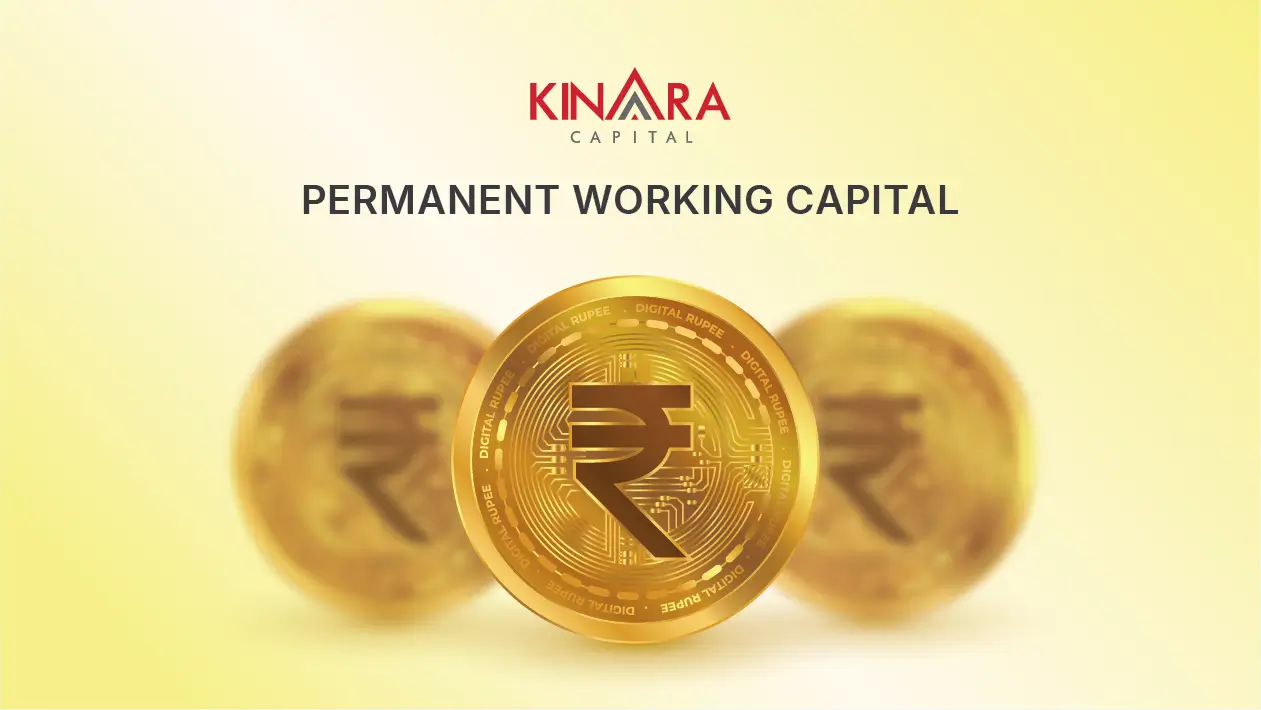
Permanent working capital is the base capital needs of a company to implement and maintain effective operating practices. Permanent working capital is also known as fixed working capital, which represents the stability of funds required in conducting routine activities such as maintaining inventory, retaining accounts receivables and managing operational costs. Maintaining stable permanent working capital is critical for the long-term success of a business, as it anchors the operation and growth of a company.
The permanent working capital definition differs from that of variable working capital, since it remains fairly constant over time, whereas temporary working capital is variable, based on the company’s fluctuating needs and growth path. Examples of permanent working capital include rent, utilities and overheads, and employee salaries, which need to be maintained at stable levels. To keep permanent working capital stable, while pursuing expansion plans or weathering financial setbacks, a lot of companies opt for working capital loans. This can provide a stable cash stream and address fundamental operation requirements, enabling the company to keep operating smoothly without impacting permanent working capital or dipping into its reserves. This form of financing, therefore, is very critical to maintaining liquidity and allowing a company’s core operational architecture to function seamlessly.
Let’s explore the various aspects of permanent working capital and what makes it so critical for the efficient operation of a business.
There are two main types of permanent working capital:
Day-to-day operational working capital makes up the regular working capital in a company. It includes the money necessary to pay for the ordinary expenses like purchasing inventory, meeting short-term obligations, and running regular operations. Working capital is a very important tool for keeping the business running smoothly and clearing current financial obligations. The working capital associated with regular operations is frequently maintained through everyday business earnings and used to support the continuing operational process.
Reserve working capital serves as a safeguard for unexpected fluctuations and emergencies. Also known as contingency or buffer working capital, this reserve is set aside to address unforeseen challenges like economic downturns, sudden market changes, or unexpected expenses. Sources of permanent working capital may contribute to building a reserve, providing a financial cushion that allows a business to navigate uncertainties without compromising its regular working capital. Maintaining a reserve working capital is a strategic approach to ensure financial resilience and agility, enabling a company to adapt to unforeseen circumstances while sustaining its core operations.
The importance of permanent working capital cannot be overstated. It is very essential to the continuity of a business’s daily operations. Unlike working capital that changes with the seasonal needs, permanent working-capital provides a stable foundation used in the daily business.
The consistent nature of the permanent working capital is one of the key characteristics, as it essentially stays uniform over a long period. This financial substrate is also a key source of funds that the businesses need to finance their day-to-day operational needs such as managing inventory and accounts receivable. Permanent working capital ensures that the company is able to work with normal and timely expenses as well as operational requirements, keeping the finances stable while maintaining steady operations.
By understanding the features of permanent working capital and its role, businesses can develop a stable financial bedrock that ensures sustainability under the changing business circumstances.
Determining a company’s permanent working capital is critical for efficient operation and growth. The permanent working capital formula follows a systematic method to calculate the minimum amount of current assets needed for sustained operations. In the first place, determine what is least enough for everyday operations that include cash inventory and accounts receivable. When these figures are determined, simply sum them up to determine the required amount of permanent working capital. To improve the computation, deduct permanent current liabilities consisting of long-term debt payable in one year and deferred tax payments. The permanent working capital calculation is summarized by the formula:
Permanent Working Capital = Total Minimum Level of Current Assets – Permanent Current Liabilities
Here’s a step-by-step example:
Step 1: Identify your total minimum level of current assets
Say your minimum cash required is Rs. 50,000
Minimum inventory required is Rs. 100,000
Minimum accounts receivable required is Rs. 75,000
Step 2: Add the minimum levels
Rs. 50,000 (cash) + Rs. 100,000 (inventory) + Rs. 75,000 (accounts receivable) = Rs. 225,000
Step 3: Now identify your permanent current liabilities
Say your long-term debt due within one year is Rs. 30,000
Deferred tax liabilities stand at Rs. 15,000
Step 4: Then subtract your permanent current liabilities from assets
Net permanent working capital = Total minimum level of current assets – permanent current liabilities
So in this case, net permanent working capital = Rs. 2,25,000 – (Rs. 30,000 + Rs. 15,000) = Rs. 1,80,000
This means that your company would need a net permanent working capital of Rs. 1,80,000 to ensure the minimum levels of current assets necessary for its ongoing operations.
Here are a few of the factors that might impact the permanent working capital requirements of your business:
There are two kinds of working capital, permanent and temporary. The difference between the two lies in their nature and usage within a business’s financial framework. Permanent working capital is the ongoing cash base that allows for continuing operations to ensure a reliable flow of resources which are needed for achieving all present as well as future obligations. It is, however, very moderately stable and long-lived with activities geared towards core operational fulfillment. Examples of permanent working capital utilization and management include maintaining inventory or accounts receivable management.
The opposite is true of fluctuating working capital, which arises in response to short-term needs. Temporary working capital examples include needs such as seasonal variations or specific projects. It is used to overcome sudden increases in operational needs but it does not remain a regular fixture within the company’s financial framework.
The distinction between permanent and temporary working capital can be stated in terms of persistence and variability as well. The successful management of the working capital involves transition between these two elements, which would allow a business to remain responsive and able to manage financial crunches, both temporary and long-term.
To improve their permanent working capital, companies can explore various financial strategies tailored to their unique needs. Asset based financing is one of the strongest channels using company assets as a collateral. This not only supplies liquidity but also enables resource efficacy.
Another option is debt financing, which means borrowing by issuing bonds or lending to support continuous business activity that will keep permanent working capital steady. At a time, equity financing plays an essential role by providing fresh capital through share sale helping the company to strengthen its long term financial viability. Diversified capital structure is achieved through the balance between debt and equity which helps to curb financial risks. A broad strategy incorporating asset-based lending, debt financing and equity finance enables organizations to strengthen their financial base in response to the changing economic environment.
Maintaining a healthy permanent working capital extremely critical to the survival and development of businesses, particularly Micro, Small, and Medium Enterprises (MSMEs). A working capital loan is a very important financial instrument that helps maintain this vital equity. These loans provide short-term funding to meet the daily operational requirements of a business by covering costs without dipping into its own working capital. With a working capital loan, MSMEs can bridge the cash flow fluctuations and unexpected expenses while grabbing opportunities for growth without endangering the sustainability of their operating expense. It is especially important for MSMEs whose demand varies with the seasons or when they are faced with unexpected situations. The working capital loans serve as a tactical buffer that helps the MSMEs preserve their permanent working capital and ensure financial strength in the face of rapid changes in market conditions.
Kinara Capital, an RBI-registered fintech NBFC, offers collateral-free or unsecured working capital loans for small businesses to help them seize every growth opportunity. Registered MSME owners can evaluate their eligibility for a loan in just 1 minute by downloading myKinara App, and start their journey to getting an instant working capital loan. Eligible MSME entrepreneurs can submit the necessary documents and the loan amount will be disbursed digitally to their bank account within 24 hours. Kinara Capital also provides multilingual doorstep customer services to MSMEs interested in learning more and needing assistance to apply. Also, we have a dedicated customer support team available between Monday – Friday (9.30 AM – 6.00 PM) at our toll free number 1800-103-2683 for any questions or assistance. This ensures that entrepreneurs can get the help they need throughout the loan process.
The main difference between permanent and temporary working capital is that permanent working capital remains constant and is necessary for a business to run daily. In contrast, temporary working capital fluctuates depending on short-term needs, like increased inventory during busy seasons.
The formula for permanent capital is:
Permanent Capital = Total Current Assets – Temporary Working Capital.
Methods of forecasting working capital include the percentage of sales method, operating cycle method, and cash flow projections.
You can lower permanent working capital by improving inventory management and reducing unnecessary fixed costs.
An MSME owner can enhance their permanent working capital by using loans, improving cash flow management, or cutting operational expenses to increase available funds.
